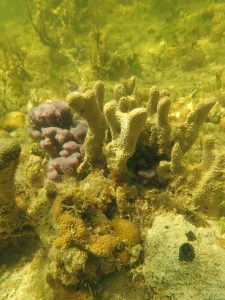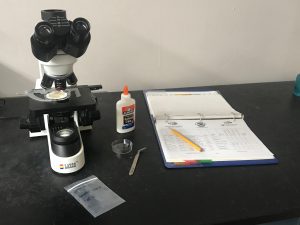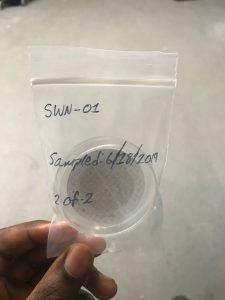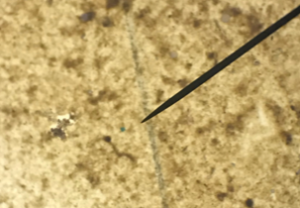Written by 2019 Summer Intern William Ware, with hosts Tim Jones and Jamie Letendre from the Florida Department of Environmental Protection
 Imagine that you are boarding an airboat on a gravel boat ramp, a government truck launches you and earmuffs dull the engine noise as you ride through mangrove islands towards the Gulf of Mexico. Ripples break the glassy surface as biologists make weird gestures that you do not understand, all you know is that these signals indicate something unseen. When the airboat stops, they reveal that you passed a manatee. This dulls in comparison to the loggerhead sea turtle, juvenile tiger shark, and bull shark pup that you see in the following hours. As typical as this will sound, my first day interning with the Big Bend Aquatic Preserves State Park was far from it.
Imagine that you are boarding an airboat on a gravel boat ramp, a government truck launches you and earmuffs dull the engine noise as you ride through mangrove islands towards the Gulf of Mexico. Ripples break the glassy surface as biologists make weird gestures that you do not understand, all you know is that these signals indicate something unseen. When the airboat stops, they reveal that you passed a manatee. This dulls in comparison to the loggerhead sea turtle, juvenile tiger shark, and bull shark pup that you see in the following hours. As typical as this will sound, my first day interning with the Big Bend Aquatic Preserves State Park was far from it.



Over my six weeks, I helped collect samples for water-quality monitoring programs, filtered microplastic samples and analyzed filters with a compound microscope, learned seagrass monitoring protocol, assisted with freshwater springs monitoring, and gained both valuable field and lab experience. I was also able to contribute to a study that is identifying sponges and coral in Big Bend Aquatic Preserves State Park by comparing field pictures to sponge literature and guides. My internship not only allowed me to apply lectures and field trips from courses (Invertebrate Biodiversity and Principles of Marine Science), it showed me their relevance.
Why monitor for water-quality?
It indicates environmental health in several ways by looking at different components of the water. This information allows researchers to notice changes in the environment and investigate their causes, but it can also be applied to other scenarios such as plant and animal well-being.

What are microplastics? Nature either breaks plastic litter into small pieces hardly visible without magnification or these small pieces are introduced to the environment, where they remain. If you heard of the garbage patches in the world ocean, these are mainly small plastic pieces and microplastics.
There is hope: WE can reduce our plastic use in manageable steps and trap plastics before they go into the environment.
 Why monitor seagrass?
Why monitor seagrass?
This underwater plant is an important habitat for fish and invertebrates, like scallops, as well as nursery habitats for sharks and refuges for manatees. Natural and human-caused events alter seagrass, so it is important to monitor it like water-quality. Freshwater springs monitoring involves measuring water-quality and measuring horizontal water visibility since the water is so clear, unlike other ecosystems using vertical visibility measurements.
What valuable field and lab experience did I gain? I learned how to: use multiparameter probes to monitor water quality in estuarine and freshwater ecosystems, hook and unhook a boat trailer from a truck (practiced trailering a boat and backing it up), ID several species of seagrass and algae, and proficiently use a compound microscope. These are just a few takeaways from my memorable summer, but please find me on Facebook to learn more.
 1
1
